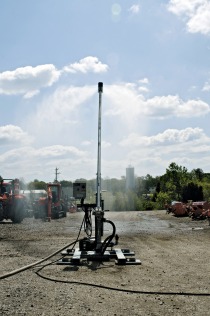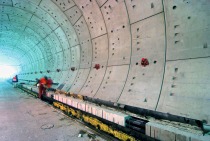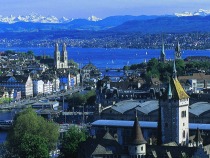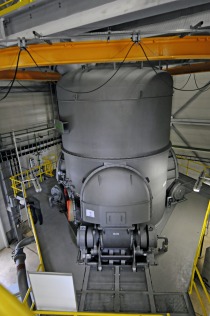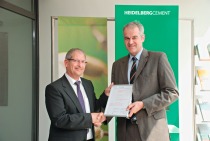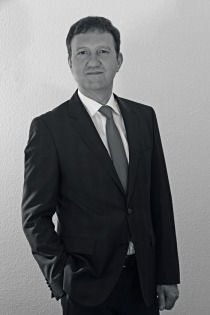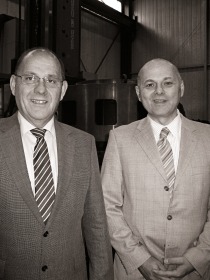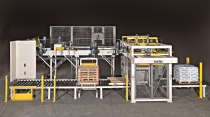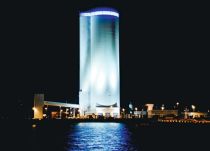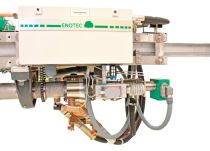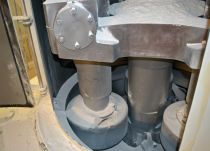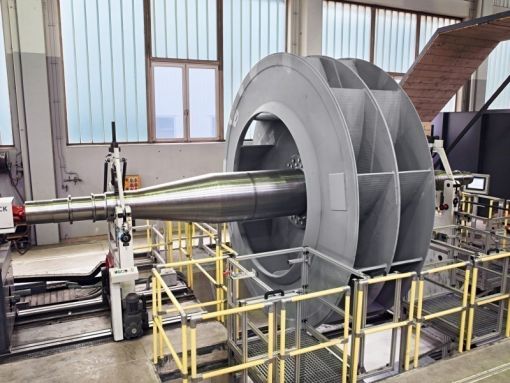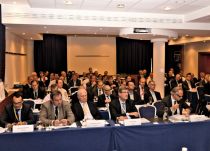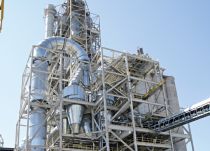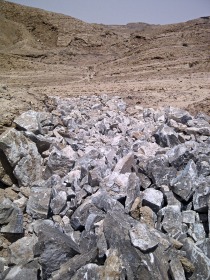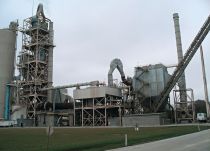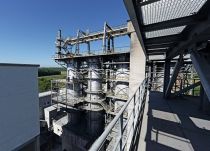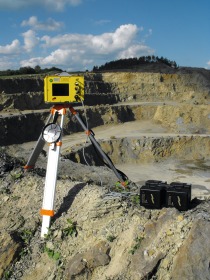GEOMIN invested in a dolomite marble grinding system from NEUMAN & ESSER GmbH Mahl- und Sichtsysteme. The new grinding system is part of a long-term strategy aimed at developing new applications for marble in the filler material sector. After the first year of operation the system has proved its cost effectiveness and reliability in the production of various finenesses. 1 Introduction The area of Lengefeld in Saxony, situated close to the German-Czech border, looks back on a 500-year history of marble mining. For the last 20 years, GEOMIN-Erzgebirgische Kalkwerke GmbH has been continuing this long tradition using modern technology. The Lengefeld dolomite marble CaMg(CO3)2 is mined underground. It is very pure and characterized by a high degree of hardness and compressive strength, as well as excellent resistance to frost and weathering. Its outstanding raw material properties, such as low pigment content and low residual porosity make it ideal for the manufacturing of high-grade products for the construction chemistry, plastics, concrete, plaster and paints, lacquers and varnish industries. At its Lengefeld location, GEOMIN had previously produced medium-grain to coarse filler materials and a range of dried grain suites and terrazzo grains. GEOMIN is the biggest German supplier of white, crystalline carbonate products. In order to develop new applications in the sectors of construction chemistry, the plaster industry and concrete aggregates, GEOMIN needed a new fine grinding system. The products manu-factured at the Lengefeld location since 1994 in a classical fine sand plant were too coarse for use in these areas of application. The new grinding system was the only way for the company to supply the demand for fine and ultrafine filler materials. GEOMIN’s search for a provider of a suitable grinding system ultimately brought them to NEUMAN & ESSER (NEA). With 80 years‘ experience in the fine grinding of minerals using robust pendulum mills, NEA was the right partner for the project. Following successful grinding tests in NEA’s own pilot plant, which was comprehensively renovated and extended in 2010, GEOMIN Industriemineralien GmbH & Co. KG, as the operator of the fine grinding system, contracted NEA to supply a type PM08U3 pendulum mill (Fig. 1). Final taking over of the system took place in summer 2011. The grinding system has been in reliable industrial operation since summer 2011. 2 Flow of material After centuries of open-cast mining, GEOMIN commenced operations in the underground mine in 1925 to work the Lengefeld deposit. Since 1992 the mining has been performed by drilling and blasting using electro-hydraulic drilling jumbos. For transporting and conveying the blasted rock, diesel-powered shovel loaders and boulder transporters (Fig. 2) are used. The raw material is conveyed to the surface via a hoisting shaft in mine carts and is pre-crushed there. It is then supplied to a processing plant for drying, comminution in a hammer mill, classification, sorting and mixing to produce various grain suites. The surplus products of size 0–1 mm from the fine sand plant are now fed via a screw conveyor system to the NEA grinding system. This material is extracted from the pre-silo and supplied by a further screw conveyor to a buffer bin that feeds the mill. 3 Grinding system in filter circuit A weighing screw feeder with variable conveying speed continuously doses the feed material into the grinding zone of the pendulum mill. Compression and shear forces comminute the feed marble in the layer of material between the grinding ring and the grinding rollers that roll against the inside of the ring. The stream of air entering the grinding zone from below removes the ground material from the grinding zone and carries it to the dynamic classifier wheel. This separates the oversized material, which is returned to the grinding zone. Only the fine material passes through the classifier wheel and is carried by the air stream to the filter for collection. The fine material collected is then conveyed to finished material silos. If the raw material sized up to 10 mm from the optional external feed is too moist, it is dried by a hot gas generator installed upstream of the grinding system (Fig. 3). Grinding and drying of the material take place in a single pass. 4 Sharp maximum particle size limitation For the aforementioned fields of application it is essential to achieve a precise maximum particle size of the ground dolomite marble. The dynamic classifier wheel installed above the mill rotor separates the material using the principle of countercurrent centrifugal force classification. The maximum particle size limitation or fineness of the ground marble is directly dependent on the rotational speed of the classifier wheel. The faster the rotation of the classifier wheel (Fig. 4), the finer are the particles passing the classifier wheel. This means that the fineness of the particles is infinitely adjustable. A sealing air system for the gap between the classifier wheel and the classifier housing reliably keeps oversized particles out of the finished material and thus ensures that the maximum particle size is sharply limited. Using the NEA grinding system, GEOMIN produces three different grain suites. Their maximum particle size limits are 99.9 % smaller than 30 µm, 60 µm and 90 µm. 5 Measurement and control technology...
more
